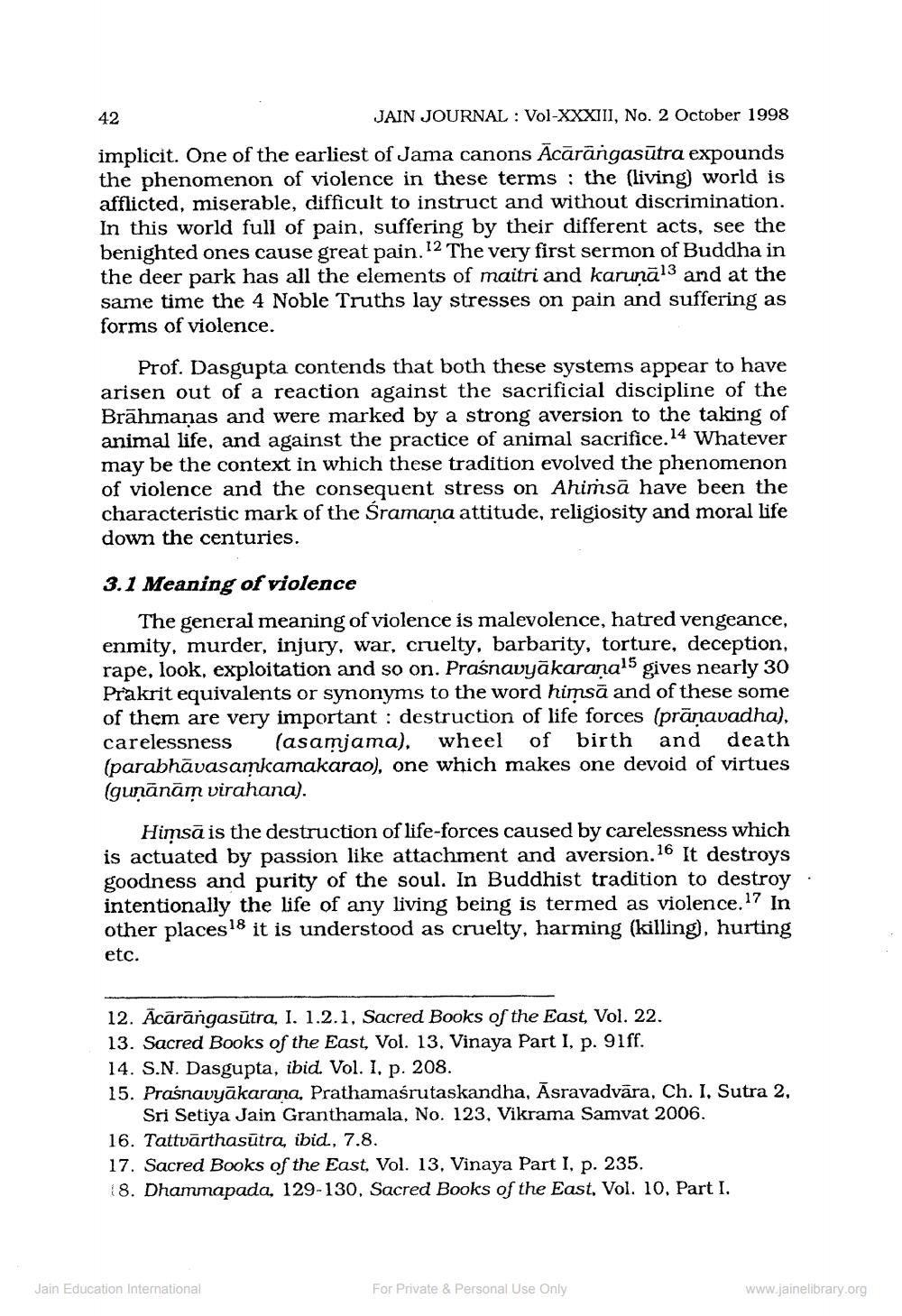________________
42
JAIN JOURNAL : Vol-XXXIII, No. 2 October 1998
implicit. One of the earliest of Jama canons Acarängasūtra expounds the phenomenon of violence in these terms: the (living) world is afflicted, miserable, difficult to instruct and without discrimination. In this world full of pain, suffering by their different acts, see the benighted ones cause great pain. 12 The very first sermon of Buddha in the deer park has all the elements of maitri and karunā13 and at the same time the 4 Noble Truths lay stresses on pain and suffering as forms of violence.
Prof. Dasgupta contends that both these systems appear to have arisen out of a reaction against the sacrificial discipline of the Brāhmaṇas and were marked by a strong aversion to the taking of animal life, and against the practice of animal sacrifice. 14 Whatever may be the context in which these tradition evolved the phenomenon of violence and the consequent stress on Ahimsā have been the characteristic mark of the Śramana attitude, religiosity and moral life down the centuries.
3.1 Meaning of violence
The general meaning of violence is malevolence, hatred vengeance, enmity, murder, injury, war, cruelty, barbarity, torture, deception, rape, look, exploitation and so on. Praśnavyākaraṇals gives nearly 30 Prakrit equivalents or synonyms to the word himsā and of these some of them are very important : destruction of life forces (prāņavadha), carelessness (asamjama). wheel of birth and death (parabhāvasamkamakarao), one which makes one devoid of virtues (guņānām virahana).
Himsā is the destruction of life-forces caused by carelessness which is actuated by passion like attachment and aversion. 16 It destroys goodness and purity of the soul. In Buddhist tradition to destroy. intentionally the life of any living being is termed as violence.17 In other places 18 it is understood as cruelty, harming (killing), hurting etc.
12. Ācārāngasūtra, I. 1.2.1, Sacred Books of the East, Vol. 22. 13. Sacred Books of the East, Vol. 13. Vinaya Part I, p. 91ff. 14. S.N. Dasgupta, ibid. Vol. I, p. 208. 15. Praśnavyākarana, Prathamašrutaskandha, Āsravadvāra, Ch. I, Sutra 2,
Sri Setiya Jain Granthamala, No. 123, Vikrama Samvat 2006. 16. Tattvārthasütra, ibid., 7.8. 17. Sacred Books of the East, Vol. 13, Vinaya Part I, p. 235. 18. Dhammapada, 129-130, Sacred Books of the East. Vol. 10, Part I.
Jain Education International
For Private & Personal Use Only
www.jainelibrary.org




